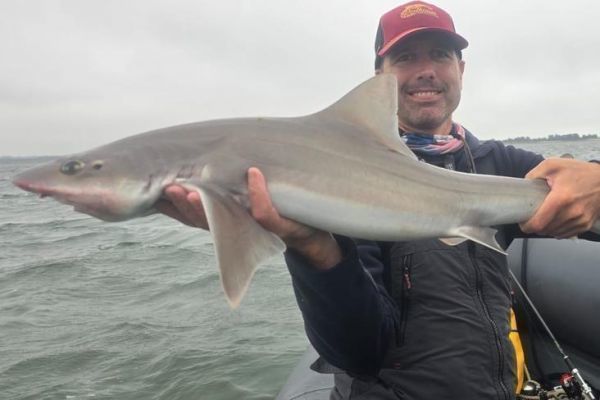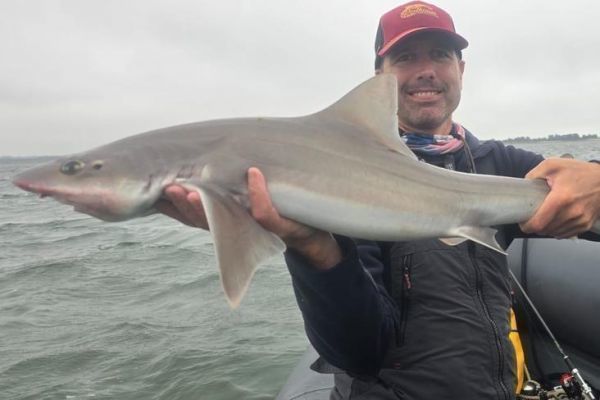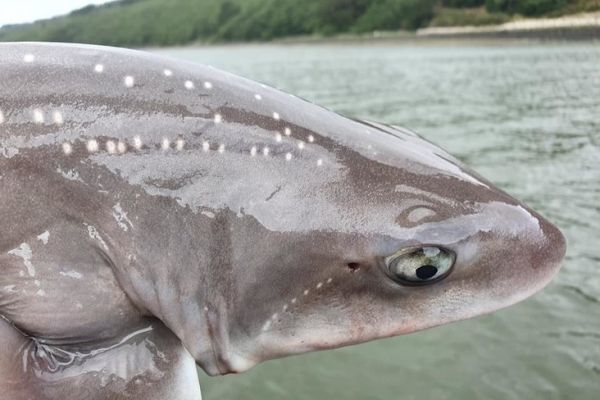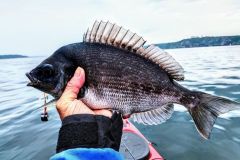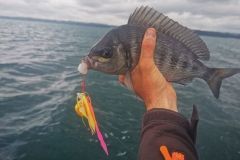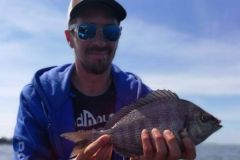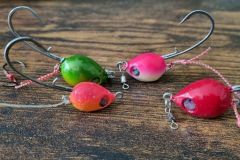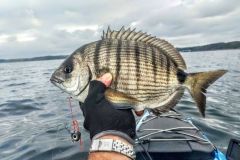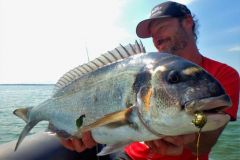The emissole
Even though it's a fish we've already mentioned in our subjects, the emissola is a little-known fish among fishermen. It is a small shark, up to 1.30 m long, with a raspy mouth and molars, unlike many sharks. It feeds on the seabed and is particularly fond of crabs.
This species is now under threat, and an association, Apecs, has set up the Mustelus project to tag and track this species of shark in order to learn more about its habits and movements. It is only on the basis of this real data that relevant and effective measures can be put in place to protect the species. That's why we're criss-crossing the Golfe du Morbihan in search of it!
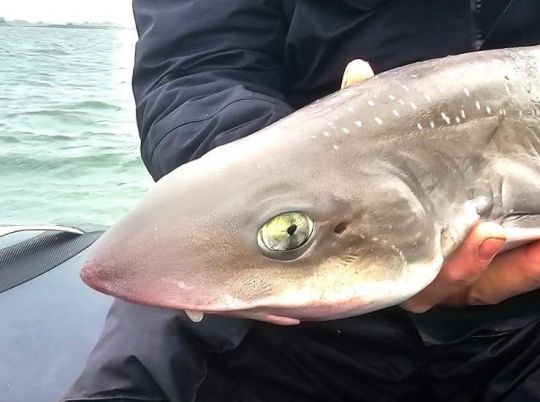
1 bait, 2 possible techniques
As we've said, the emissola is particularly fond of crabs, so this is the bait most often used. There are two possible approaches: drift fishing with a tenya, or fixed fishing with a landed bait, just as you might do for gilthead bream. The choice of one or the other obviously depends on individual tastes, but also on the fishing conditions of the day. Of course, for shore anglers, set fishing is much simpler!
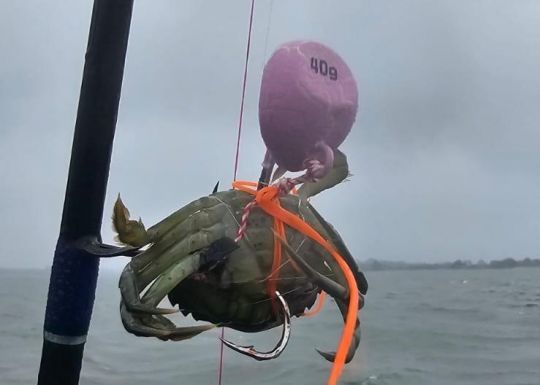
The fishing frame
On our first tagging trip, we opted for an itinerant tenya fishery, particularly in the muddy areas at the bottom of the estuary. However, as it was a day with a high coefficient (95) and the presence of numerous drifting algae in the Gulf at this time of year, we quickly looked for a cleaner area and changed our tack to set a few lines on the landings.
The rig is extremely simple, consisting of a slider fitted with a 50-80 g sinker, followed by a 40/100 leader terminated by a 3/0 circle hook.
That day, we were lucky enough to encounter 2 passes of emissoles in 3 hours and hook 5 fish. Unfortunately, only 3 were able to be netted and tagged.
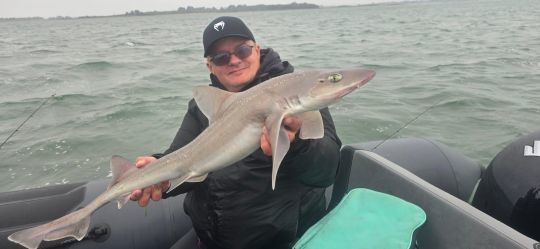
The protocol
To ensure effective marking and tracking of fish, it is important to follow a specific protocol when catching them.
The information to be collected is therefore :
- Size in cm
- The weight
- The sex
- Place of capture
The next step is to fit a ring, carefully noting the ring number, to the fin of the emissole using a pair of pliers.
In addition, the Mustelus project focuses on a specific variety of emissole, the so-called "spotted", some of which (around 1 in 4), contrary to their name, have no distinctive spot on their back. If one of these is caught, its mouth must be photographed to check that it is not another variety, namely the smooth emissole, which is not normally present in our area.
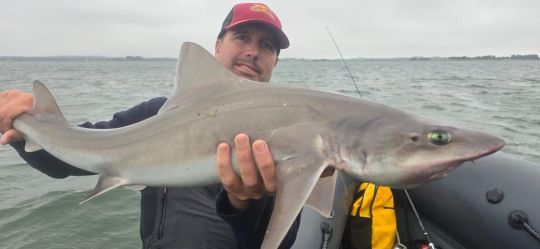
Individual participation
For this project to be effective, all anglers should contact Apecs if they catch a ringed spotted seatrout, taking care to record its measurements.
But boaters wishing to take part in this participatory science project can also contact Apecs for training and a marking kit.

 /
/ 